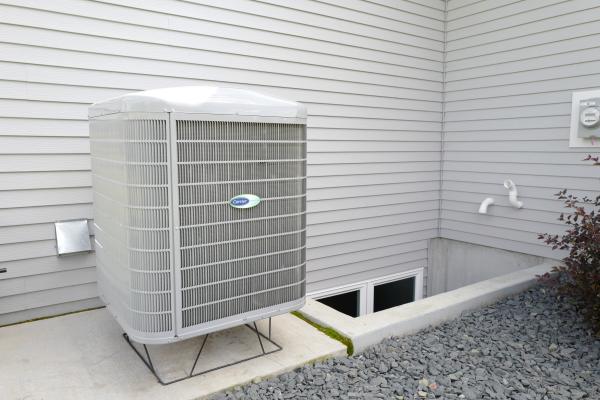Heat pumps can do a lot more than just heat your home; they can provide air conditioning and humidity control, too. These systems use electricity to transfer heat from one place to another, meaning no extra energy is wasted in the process of generating heat. The main types — air source, split ductless and geothermal — operate differently. Let's see how.
Air source
 These heat pumps are the most commonly installed. They work well in moderate climates with mild winters, though advances in technology make them a good option for other areas, as well.
These heat pumps are the most commonly installed. They work well in moderate climates with mild winters, though advances in technology make them a good option for other areas, as well.
Air-source models include an indoor and outdoor unit. The outdoor unit draws warm air in and moves it over coils that transfer heat energy to a refrigerant. That refrigerant moves to the indoor unit, where another coil transfers heat energy back to air that heats your home. To provide cooling, the system simply works in reverse.
Compared to propane furnaces and electric baseboard heaters, air-source heat pumps can reduce your heating costs by about 50%. They can also dehumidify a space better than most standard air conditioning units.
Mini Split ductless
Split-ductless heat pumps, also called mini-splits, operate similarly to air-source models except that these systems don't require ductwork, so they're good options for single-room additions or homes without ducts.
Ductless systems include at least two units — a compressor and condenser outside and one to four air handlers inside. The quiet, indoor units are often installed high on a wall or the ceiling. The system is operated by a remote control and circulates refrigerant through tubing that connects the indoor and outdoor units.
Though installing this type of system with multiple indoor units can be costly initially, the lack of ductwork reduces energy losses and provides temperature control for individual rooms. That will save you money on future energy bills.
Geothermal
Geothermal heat pumps utilize heat energy stored in the ground or water. These models can control humidity and fit in a wide variety of homes, even those in extreme climates.
Geothermal heat pumps use pipes buried horizontally or vertically in your yard. The pipes contain a water solution, which is warmed by heat from the ground, pond or well. This takes advantage of relatively constant ground or water temperatures. The solution is then circulated through the pipes into and out of your house, transferring heat as it goes.
These systems are typically more reliable and quieter than air-source systems, but they come with a higher installation cost. That increased cost is well worth it for many homes, however, because the system can reduce your energy use by 20% to 50%.
Upgrading or adding a heat pump is a job for a professional. Contact a qualified HVAC technician who can determine and install the right type of unit for your home.
